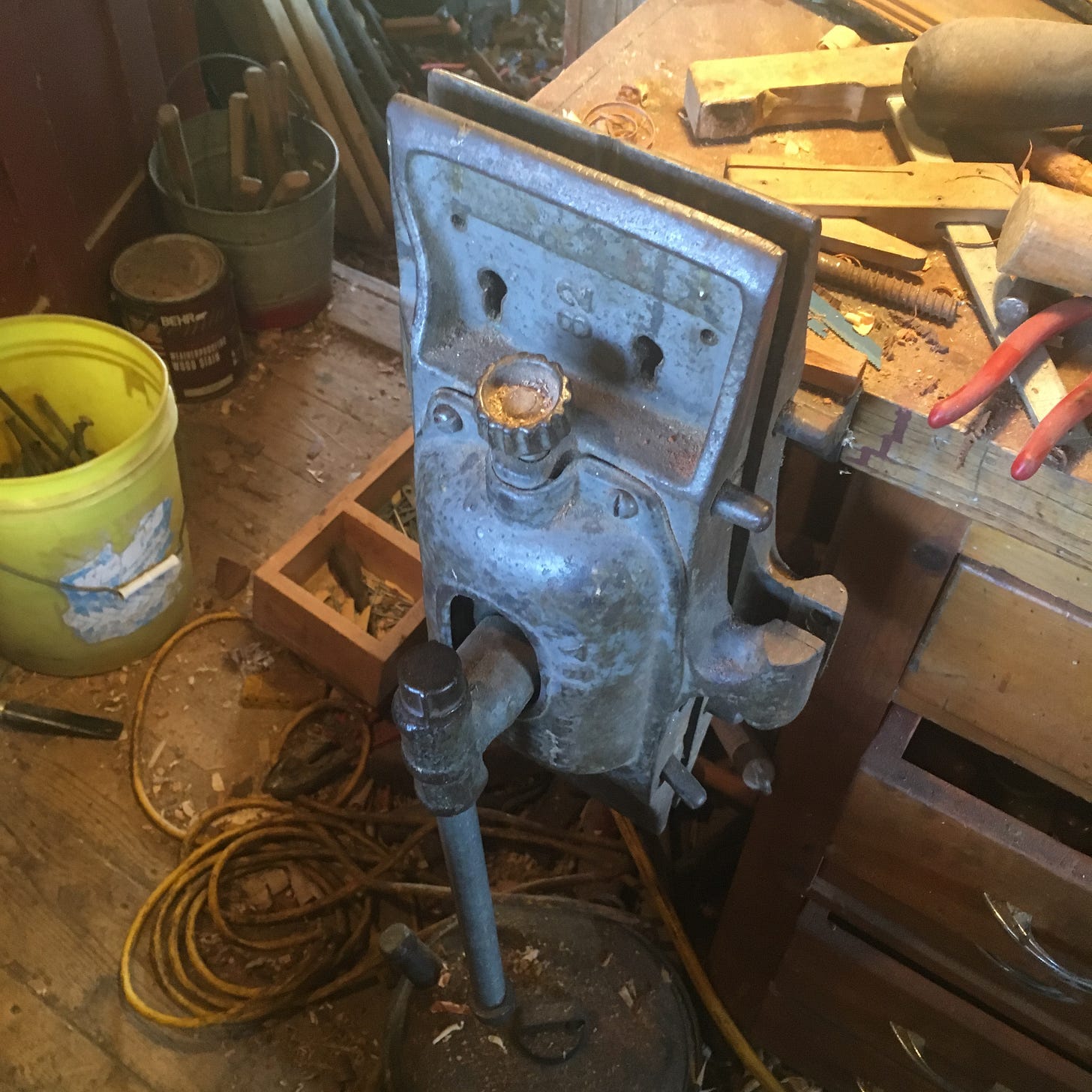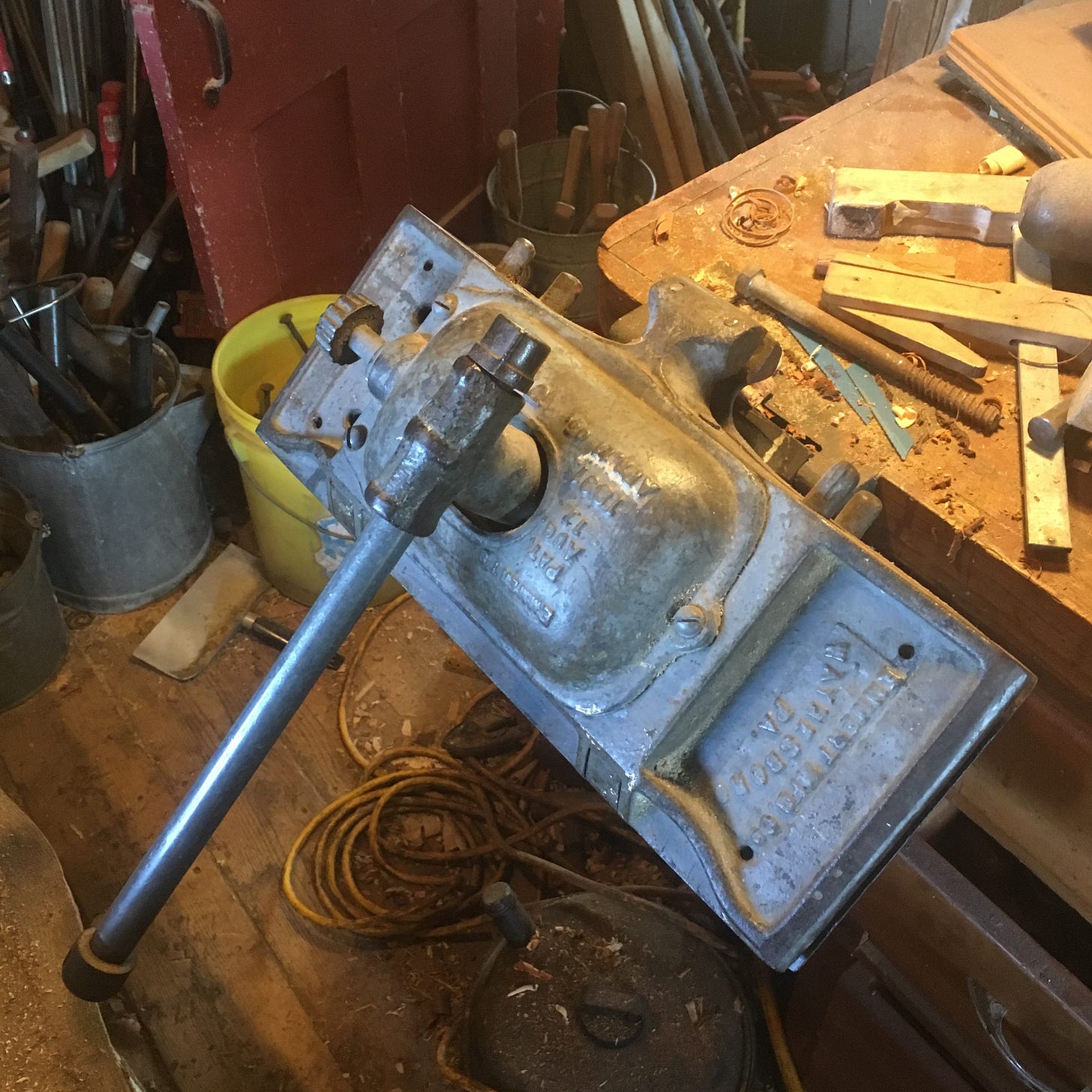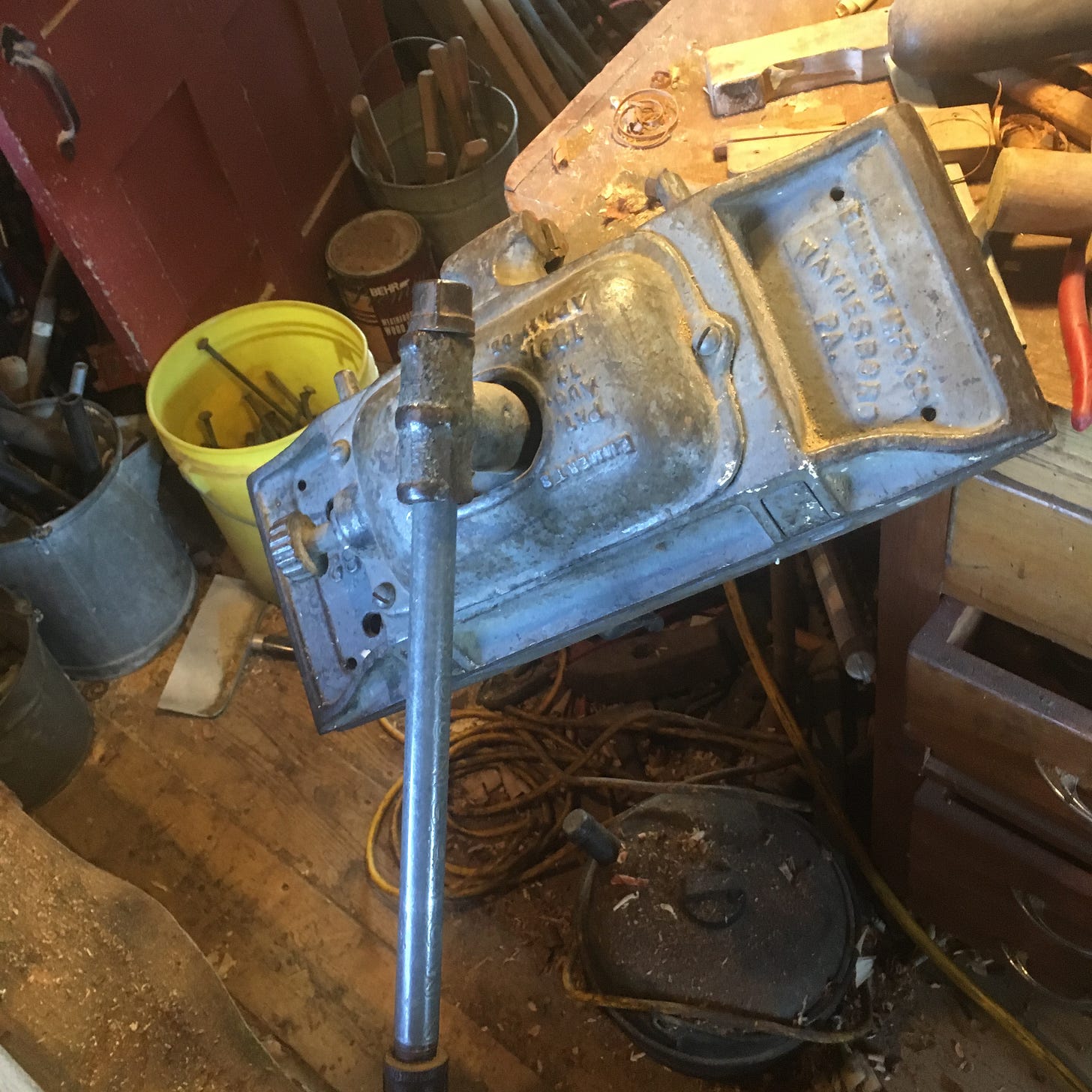Hi, welcome to I, Bodger, a newsletter about learning a new craft during lockdown. If you’d like to sign up, you can do so by clicking here, or just read on...
Our last installment ended with the lines, “But no. I, Bodger is about a more recent happenstance, a choice a month or two ago, to teach myself how to turn wooden bowls on my lathe…”
So, perhaps the beginning is when I got my lathe, in 1983 after returning to Washington, DC, from two years in Japan.
My lathe, made by J.G. Blount of Everett, Mass., was old even then, manufactured perhaps at the turn of the century, powered originally not by electricity, but by a flat belt from overhead or underneath the floor. I was replying to an ad by two guys in Hyattsville, Maryland, who were trying to liquidate the estate of a machinist who had been employed at the Anacostia Navy Yard. I knew little or nothing about power tools at the time, except that I desired them. Inspecting the equipment, I felt unresolved about what to do until I saw the Emmert vise attached to the workbench the late machinist had made.




I had never seen a vise like this before, capable of adjusting through so many ranges of motion. It dawned on me that this machinist probably had known what he was doing. He had also made a 15-inch disk sander from scratch, as well as a base for a 1950s Delta tilting table saw in the style of his work bench. I decided to buy the lot: the bench, vise, wall cabinets, saw, sander, and lathe.
The lathe came equipped with a variety of centers, a 6” Cushman four-jaw chuck, an array of old lathe gouges and chisels, Morse taper adapters, a variety of faceplates, a carriage similar to those seen on metal lathes for mounting fixed cutters, and five dowel cutters (sized 5/8”, 1/2”, 3/8”, 5/16”, 3/16”) that can be threaded on the spindle. The lathe spindle is 1-5/8” in diameter, and threaded at 10 TPI (threads per inch). This big a diameter on a wood lathe spindle is unheard of these days, much larger than what is now common. It’s a good thing the lathe came so well-accessorized as it is very hard to impossible to find things that fit it nowadays.
I had no clue about the dowel cutters, but they have proven to be very useful over the years. In fact it was only a few years ago that I noticed an adjustable screw on the side of the old 1/2 h.p. Century motor that can travel across a slot labeled “L” and “R” (left and right). The motor is reversible! A handy feature when trying to sand out rough patches on a bowl where the tool inevitably must cut against the grain.
Honestly, I don’t think the guys who sold me this equipment knew how good it was. But maybe they did. At any rate, I’ve had this stuff ever since and it has held me in good stead. Well, a lot has happened since 1983.




Hey Stefan... What a nice surprise...
"I knew little or nothing about power tools at the time, except that I desired them"...lol. Kinda how I feel about stuff I wanna buy.